Innovation comes in many colors, and as problems and challenges arise, innovations are soon to follow as a solution. Many ecosystems benefit from a mix of small, agile startups and larger, established companies working together or independently to drive innovation with success, often involving a combination of factors, including a supportive organizational culture, access to talent, financial resources, and a strategic vision.
The government works with companies of all sizes and shapes to help it solve its problems and meet its needs. Each year it engages hundreds, if not thousands, of companies to conduct research and development to solve pressing issues. And in most instances, the government wants in return merely the right to use the technology for its own purpose leaving ownership to the innovator thereby opening the door for the innovator to numerous commercial opportunities.
At least that’s how it’s supposed to work, and it can work that way if companies have a plan to capture, protect, and exploit their innovations. To do so you need to know some basics.
IP… property of the mind
What is intellectual property? Unlike a house or an automobile, it is difficult to place tangible metes and bounds around innovative ideas. An individual gains rights to a home or real estate via a deed. The title in an automobile establishes ownership of a vehicle. No single document provides adequate protection of intellectual property. Rather, intellectual property rights are established through patents, copyrights, trademarks, and trade secrets. Each protects a different aspect of intellectual property that, when taken as a whole, encompasses the protection of an innovation. Note that “data rights” (a common term in government contracting) is not included as a category of IP. Data rights is nothing more than a defined term under the governmental rubric of procurement formed by a compilation and/or aggregation of copyrights and trade secrets.
What?
The government seeks and gains certain rights in technology developed under government contracts. The scope of, and what triggers, those rights vary from agency to agency and contract to contract. To plan on how to leverage rights in an innovation, a company must fully understand what those triggers are and the scope of the rights they are providing to the government. For example, does a company agree to “develop” a set of code for a particular application or merely “validate” that their code can accomplish that which is sought? Knowing what triggers certain governmental rights enables a company to match its interactions with the government with its business strategy.
The “what” is also knowing the rules of play (FAR, DFARS, etc.) and the company’s business plan. Unlike the commercial sector, the government provides all players with access to the rules of procurement (e.g. FAR, DFARS) under which it must operate. It behooves those working with the government to understand these rules.
Why?
The common thread in almost all emerging companies is the constant battle for controlling and managing cash flow. Developing and executing an intellectual property (IP) strategy often falls right behind or close to next year’s holiday party budget. But unlike other discretionary expenditures, IP planning, or the lack thereof, is directly tied to long-term value. The hard lessons on protecting innovation are realized during due diligence for an acquisition or an investment round. Baked into the value of a company is an implemented strategy to protect innovations thereby enabling a profitable cash flow.
When?
It is heartbreaking to tell a client, “If only we had talked last week.” There are disclosure rules concerning when an innovation thereafter can and cannot be protected. The harder realization is recognizing when something is ripe for protection. For example, patents protect inventions, not ideas. An invention is a conception tied to either an actual or constructive reduction to practice, which triggers an invention that is “ripe” for protection. The same analysis needs to take place for creative works protected by copyrights or processes secured as a trade secret. Innovation rarely is a “light bulb” moment. Innovation is a process and so too must be the process of “when” to seek protection. And often the innovators are too close to the project or effort to recognize their advances. Periodic reviews for protectable IP must be scheduled and conducted to make sure that innovation is recognized.
A process to evaluate whether an innovation exists should be established before it is presented to a third party, including the government. Too often, innovations are included in a proposal or offer without any consideration of whether it has been protected. And it may be entirely plausible that the business plan is to work within the government marketplace to reach the point that an innovation is protectable. But the key to success is being proactive rather than reactive. Innovations are protectable when they’re recognized as such before disclosure. This is especially true with respect to utilizing the patent mechanism in a protection strategy. Patents can be an effective means by which to secure or enhance a competitive advantage both within and outside the governmental marketplace. However, the role of a patent and the mechanism for gaining those competitive advantages shifts when working with the government. The details of this mechanism are described in another article entitled, “The Misunderstood Role of Patents When Engaging the Federal Government”. As data rights in the federal government encompass trade secrets a disclosure to gain patent protection, if not properly drafted, can impact the scope of rights gained by the Government. Moreover, the triggers by which the government gains rights to patent technology are different than what is required to achieve patent protection from the USPTO. And while a holder of a patent cannot preclude/prevent the Government from practicing that which is patent as in the commercial marketplace, it may trigger a reasonable royalty requirement which can in turn trigger fiscal considerations during contract competitive analysis.
How?
Failing to plan is a plan for failure, but the planning process is critical. In the world of innovation, it’s important to establish a process by which ideas, concepts, and processes are continually evaluated to determine when they reach the level of an innovation suitable for protection within the established rules and in line with the company’s objectives. Martensen IP team can help by walking you through the process so nothing falls through the cracks. Whether you’re just starting the process or have any questions regarding IP protection, contact us to set up some time to discuss.














